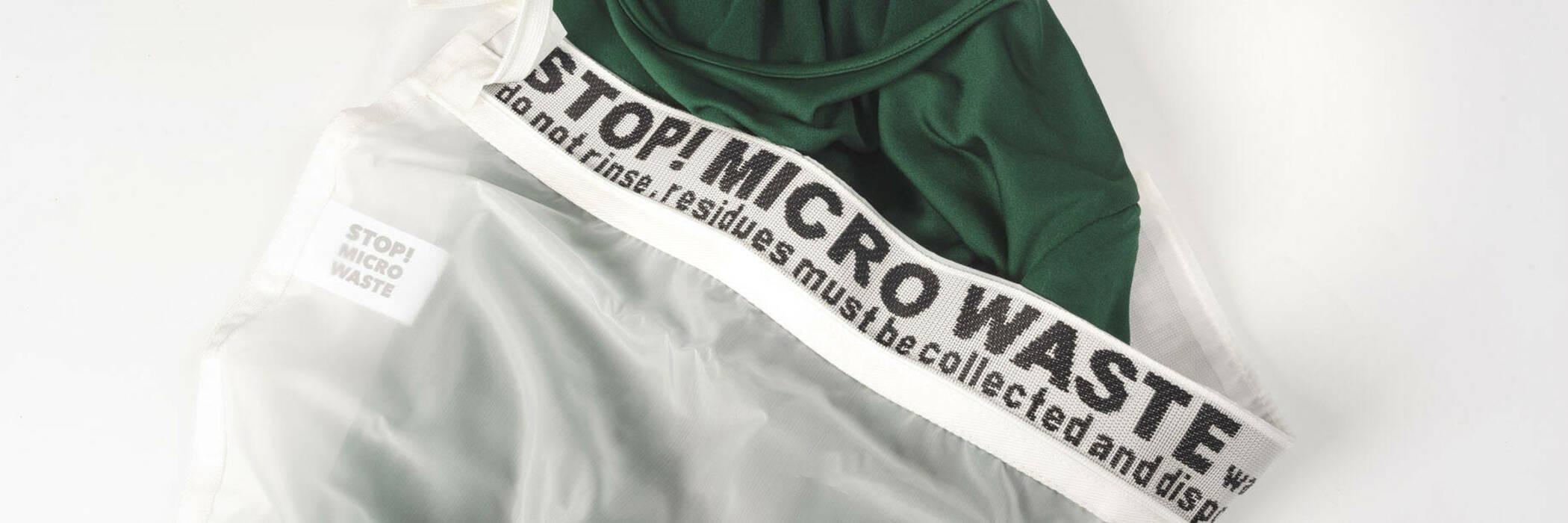
Guppyfriend washing bag review
We put a washing bag claiming to catch plastic microfibres through the wringer.

We all need to do our bit to reduce plastic waste. But what can you do about the tiny bits of microplastic that come off your synthetic clothes and go down the drain when they’re being washed?
The Guppyfriend washing bag claims it’s the solution. The manufacturer boasts the bag is a “scientifically approved solution against microplastic pollution from washing”.
Does it really work? We trialled the bags to find out.
What we did
We used two medium-sized Guppyfriend washing bags (50x74 cm) in a top-loader washing machine.

In the first bag, we washed two new polyester and elastane tops. In the second, we washed older garments: a polyester sweatshirt, and a polyester, viscose rayon and elastane blend T-shirt. Both bags were washed on delicate, cold-water cycles with liquid detergent.
We washed each loaded bag five times, balancing the machine with whatever household washing was in the laundry basket at the time.
By the third wash we saw fibres, which looked like lint, being collected in the bag. The bag containing the older garments had more fibres (there’s evidence older synthetic clothes shed more because the fibres weaken with wear).
We then packed our bags and sent them to the lab to assess how they’d performed.
The microscope test
The lab measured the weave of the Guppyfriend washing bags under a microscope and found it was uneven. It also found microscopic fibres sticking out through the bags’ weave. If those fibres escaped, they’d end up going down the drain with the rest of the wash water.

Guppyfriend said it doesn’t claim the bag traps all fibres but the capture rate is “above 90%”. A spokesperson said its testing showed the bag significantly reduced the amount of fibres shed from clothing. It also said openings in the bags’ weave get smaller after washing, reducing the chances of fibres escaping. However, it acknowledges the bag won’t catch nanoparticles, which are smaller than microfibres.
“We see the Guppyfriend washing bag as a tool to raise awareness and as a temporary stopgap until we have more sophistic[ated] solutions,” it said.
What do you do with the fibres the bag catches? Guppyfriend recommends you gather them up and put them in the bin. Although this saves plastic from entering the ocean, it ends up in landfill instead.
Tips to reduce microplastic waste
- Use your washing machine’s eco- or short-wash cycle. The longer clothes are washed, the more opportunity microplastics get to be released.
- Wash similar textiles together. Harder fabrics, such as denim, can rub up against softer ones in the wash, which can release fibres.
- Don’t wash your clothes as often. If you can, wash stains by hand.
You can also check what clothes are made from before you buy. By law, clothing must have a label stating its fibre content.
Specs: Guppy Friend Washing Bag
Availability: www.guppyfriend.com
Price: $39.99
We used the medium-sized laundry bag (50x74 cm). It’s made from polyamide, a type of plastic, and manufactured in China.

Fuel our fight for your rights
We’re working hard to keep big businesses and lawmakers in check on one-sided retirement village contracts, greenwashing claims, misleading supermarket prices and more. With your support, there’s power in numbers. Help us raise $50,000 in four weeks to stand up for your consumer rights.
Member comments
Get access to comment